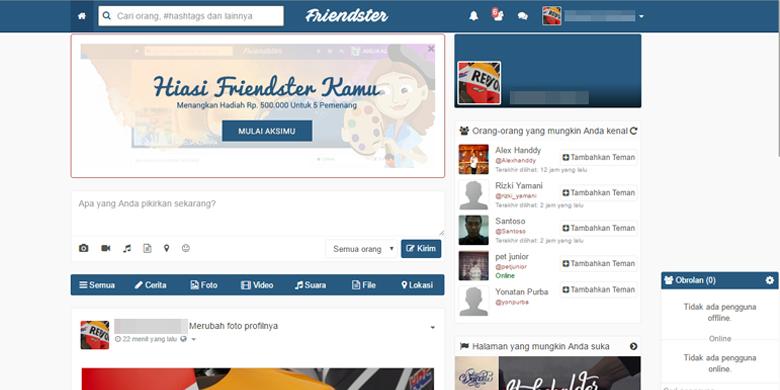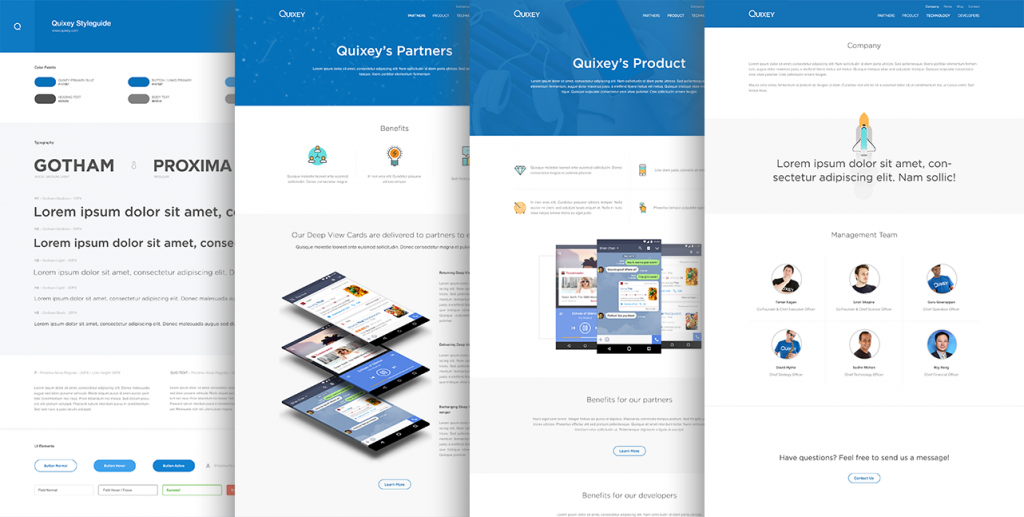Entrepreneur Stories
Apps That Should Have Done Well But Failed Miserably
Published
6 years agoon

Technology can either be a boon or a bane, depending on how it works for your business. When the .com bubble happened, several startups did really well instantly. However, when the inevitable popping of the bubble happened, a lot of these startups failed miserably. Over the years, while we have looked at case studies of different apps which succeeded, no one really thought of stopping and looking at the apps which failed. Here is looking at some really brilliant apps and startups that should have done well, but did miserably instead.
1. Google Wave

Google Wave, when it launched, was supposed to change the communication game forever. This app was created to help those people who thought communicating on the app store was extremely annoying. While on the front of things, this app looked exciting and promised a lot of change, it failed to make the right mark. A lot of things went wrong for Google Wave, the main reason being not a lot of people knew how the app functioned. Perhaps one of the major mistakes the makers did with this app was that they thought they could ride on the success of Google’s popularity. Unfortunately, Google Wave shut down six months after it came on the app store and clearly, their marketing strategy was not up to the mark!
2. Friendster

Credited to be one of the first social media platforms similar to the ones we see today, Friendster came to be in the year 2002. Founded a year before Tom Anderson created MySpace, Friendster secured close to $ 50 million funding from the time of its inception. Friendster grew in popularity because it connected friends to each other and did not let you connect with anonymous people. However, it failed because the makers did not want to ride with the times and kept their user experience to a very basic level. If they had capitalised on the trends at the time, Friendster would have grown to be a really huge success. In fact, when they were at their peak, they had even gotten an offer from Google for a buyout of $ 30 million and had they accepted the buyout, the world of social media would have been quite different today.
3. GovWorks.com

When GovWorks.com was founded, it was created with the aim of making everyone’s (from government officials’ to citizens’) lives easier. From letting government officials track their daily activities to letting citizens pay their bills, book tickets and look up information about their city, GovWorks.com had everything in place for the making of a really great connector! However, GovWorks.com failed only 3 years after its inception. Growing from a team of only 8 people in the year 1998, this platform had 250 employees when things started going bad. Disagreements and power struggles within the management, along with the lack of elimination of the software’s bugs caused the failure of this innovative platform.
4. Quixey

An example of another app that failed despite receiving a lot of funding, Quixey’s downfall was the perfect example of an app that failed because it got too arrogant with its position in the market. Quixey was designed to become the digital assistant of today, with the main aim of allowing users to find content on the different apps installed on their phones. Immediately after the launch, Quixey raised $ 50 million from Alibaba in a series C funding round. However, once Alibaba’s Initial Public Offering (IPO) went through in September 2014, the e commerce platform started reevaluating its interest in Quixey and decided it wanted out. This is when trouble started brewing and Quixey went under the gun. A couple of years later, with no investments coming through and debt piling up, Quixey was forced to downsize, eventually leading to liquidation.
5. Colour

Aimed to be an innovative photo sharing app between friends and strangers alike, Colour was an extremely innovative app at a time when people were running on the wave of rip offs. With just the right amount of funding to back its idea, a creatively designed website and users waiting to try the new app out, Colour had it all. However, right after it launched, users started realising there was something off with this photo sharing app. Lack of privacy functions and a poorly designed interface were the primary reasons for the growing wave of disappointment in the users. However, instead of trying to fix the bugs, the app came back as an app that let users live stream videos from Facebook. Unfortunately for the makers, while the idea was innovative, the damage from earlier was too great and no one wanted to accept the new change. The lesson here? Fix what is broken and do not try new things till you know it is going to work for sure!
Apps fail all the time but what hurts the most is that if the road map for these apps were planned well, then they could have been massive successes right from the day they were launched!
You may like

The workplace has undergone massive changes in the last century. At the turn of the Industrial Revolution, any workplace was dominated by men while the women were delegated to run the homes. However, with the advent of the internet and new and exciting technologies, workplaces have undergone a tectonic shift. Women are no longer comfortable staying at home and are instead opting to lead teams and organisations. As every year passes, we get closer to true gender equality, women have proven time and again that they are equally capable to get the job done if not better in some instances. Names like Wolfe Herd (Bumble founder,) Kylie Jenner (Kylie Cosmetics founder,) Masaba Gupta (Masaba clothing label founder) are just some of the names who are known for leading world famous brands with their unique style of leadership.
As the world celebrates International Women’s Day, we bring to you five women founders who run world famous and successful startups.
1) Upasana Taku-MobiKwik
If you are an Indian and are used to doing online shopping, more often than not at the time of payment, you would be directed to a payment gateway. One of these gateways would normally be MobiKwik. The startup is a well known name in the digital payments and digital wallet space. MobiKwik was founded by Upasana Taku in 2009, who prior to founding MobiKwik used to work with PayPal. Today Upasana Taku is also in charge of bank partnerships, business operations, and talent acquisition at MobiKwik.
2) Richa Kar-Zivame
An enthusiastic MBA student, Richa Kar, developed an online lingerie shopping platform in the year 2011. Currently, Zivame is India’s leading online lingerie store with a valuation of more than $ 100 million. The brilliant idea for her own lingerie business came to light when Richa tracked Victoria’s Secret’s sales, who was one of her clients when she was working at SAP. She observed the lingerie sales figures reached peaks overseas but, Indian women were not provided with the similar innerwear. While Richa was studying the Indian lingerie market, she realized the social embarrassment in India surrounding lingerie shopping. Today Richa Kar could be credited with destigmatising the uneasiness surrounding lingerie shopping in India.
3) Falguna Nayar-Nykaa
After a long stint as an investment banker, Falguni Nayar founded Nykaa.com in the year 2013. An online one stop shop for beauty products from Indian and international brands, Nykaa changed the world of online shopping. Who would have ever thought buying makeup online would be so easy? Falguni Nayar proved many critics wrong and created a brand new place for people who love experimenting with styles, designs and colors.
ALSO READ: Zivame: Founding Story
4) Sabina Chopra-Yatra.com
Yatra.com is a popular Indian website for making flight and hotel bookings. Sabina Chopra was instrumental in identifying the potential for travel commerce in India and people moving towards cheaper or easier travel. By the time, people started looking to make bookings, Sabina made sure Yatra.com was already in place. Sabina was the former Head of India Operations of eBookers, which is also an online travel company based in Europe. Along with this, she was also working with Japan Airlines which further adds to her experience in the travel industry.
5) Rashmi Sinha-SlideShare
SlideShare allows people to upload and access their presentations online. While this feature is presently available everywhere, SlideShare was one of the first players in making this happen. Rashmi Sinha was one of the founders of the presentation sharing platform SlideShare. The company became so successful that in 2012, LinkedIn acquired the company for an amount of $100 million.
Let us know in the comments if you know any other wonderful women who have become leaders of their right or have started up and are doing extraordinary things. We at Startup Stories wish a wonderful Women’s Day to all the women in the world who are changemakers.
Articles
Why Are Ads On Digital Media Failing To Reach The Right Audience?
Published
3 years agoon
March 1, 2021
If you are a regular user of social media platforms and also a fan of consuming content on the digital medium, then there is a very high likelihood that you have seen ads on pages you are reading or watching something. There would be times when you have been targeted by an ad which feels like it was wrongly targeted at you. Imagine if you are a vegetarian by choice and while browsing online, if you are targeted by a food delivery app which shows ads about chicken dishes. The ad would only serve to spoil the mood of the online user instead of serving its actual purpose which is to push the user to buy a chicken dish.
These wrongly targeted ads might be the side effects of performance marketing or a weak brand marketing. Performance marketing means advertising programs where advertisers pay only when a specific action occurs. These actions can include a generated lead, a sale, a click, and more. Inshort, performance marketing is used to create highly targeted ads for a very specific target audience at a low cost. Performance marketing usually means high volume for a very specific cost.
Brand marketers on the other hand believe in narrowly defining target audiences but end up spending a lot of money on ad placements. Gautam Mehra, CEO, Dentsu Programmatic India & CDO, Dentsu International Asia Pacific said, “You’ve defined a persona, you know the emotions you want to elicit, but then you buy a YouTube masthead and CricInfo sponsorships because IPL is up. If brand advertisers look at audience-based buys more deeply than just placements, you will see more relevant ads (sic.)”
ALSO READ: How Digital Marketing Is Impacted Due To The COVID-19 Pandemic
Performance marketing is more of a sales function rather than a marketing function and is about meeting the cost of acquisition. This is a reason why budgets are usually high for performance marketing. Mehra goes on to add, “the fact is that an engineer can out-beat FMCGs on performance marketing. Advertisers who have cracked this are spending 10x and are on an ‘always on’ mode (unlike time-bound brand campaigns.)”
There is always the case of supply and demand, with the supply usually exceeding the demand on digital platforms. Ultimately, it boils down to the choice between no ad versus low relevance ad and it is quite easy to guess that having a low relevance ad is better.
Arvind R. P., Director – Marketing and Communications at McDonald’s India (West and South,) said “McDonalds’ for instance, has seen its share of spends on digital grow from 20% levels a couple of years back to over 40% at present. Outcomes of this journey have been encouraging, proven by our media-mix-modelling and other key metrics. We have seen best results from an optimal mix of Television plus digital (sic.)” Moreover, Arvind also believes performance marketing only approach could turn out to be more suited to short term, versus a more consistent full funnel effort. The latter ensures adequate emphasis on building consideration, as well as growing transactions. Arvind feels digital is a complex medium which needs investment in the right talent who could use the right tools. Brands which underestimate the need for the investment are often disappointed from the return on investment from the digital medium.
With the constantly changing consumer dynamics marketers are now shifting to unscripted marketing which frankly needs more insights into the consumer mindset. The lack of marketers to do the proper research is why digital medium is plagued with irrelevant ads.
Articles
From Unicorn To Bankruptcy; Knotel Bears The Brunt Of COVID-19 Pandemic
Published
3 years agoon
February 8, 2021
It is no secret that in the fast paced world of startups, fortunes can change at the snap of fingers. Sometimes startups tend to scale so quickly that they become unicorns and sometimes the fortunes reverse so quickly that a startup can immediately go bankrupt from being a unicorn. The latter was the case for an American property technology startup Knotel, who are now bankrupt due to the disruptions by the COVID-19 pandemic.
Knotel is a property technology company quite similar to WeWork. Knotel designed, built and ran custom headquarters for companies which It manages the spaces with ‘flexible’ terms. Knotel does a mix of direct leases and revenue sharing deals. Knotel marketed its offering as ‘headquarters as a service’ or a flexible office space which could be customized for each tenant while also growing or shrinking as needed. For the revenue-share agreements, Knotel solicits clients, builds out offices, and manages properties, and shares the rent paid to it by the client with the landlord. This model is the majority revenue generator for Knotel.
In March 2020, just before the COVID-19 pandemic unleashed its economic destruction on the world, Knotel was valued at $ 1.6 billion. What is even more interesting is Knotel raised $ 400 million in Series C funding in August 2019 which led to its unicorn status. However, with the COVId-19 pandemic and its consequent lockdowns and curfews by various governments across the world, startups and businesses shifted to a remote working model. This in turn led to startups pulling out of Knotel properties to cut down on working costs.
ALSO READ: Quibi : Startup With A Billion Dollar Launch To Shutting Down All In Six Months
In late March 2020, according to Forbes, Knotel laid off 30% of its workforce and furloughed another 20%, due to the impact of the coronavirus. It was at this point that Knotel was valued at $ 1.6 billion. The company had started the year with about 500 employees. By the third week of March,Knotel had a headcount of 400. With the cuts, about 200 employees remained with the other 200 having either lost their jobs or on unpaid leave, according to Forbes.
In 2021, Knotel filed for bankruptcy and agreed to sell its assets to Newmark, one of their investors for a total of $ 70 million dollars. As work culture is still undergoing changes as a consequence of the COVID-19 pandemic and with many companies realising that remote work model saves costs and improves work efficiency, the flexible workspace sector would continue to face challenges. Knotel is just the tip of the iceberg and is a warning call for the flexible working spaces industry.
Recent Posts
- Discover Kheyti, The Startup Changing The Lives of Farmers In India
- Suki: This Startup Wants To Transform Healthcare With Its Artificial Intelligence Tool
- 5 Successful Indian Startups Founded By Women
- Leher Versus Clubhouse: Which Audio Listening Startup Would You Choose?
- Why Are Ads On Digital Media Failing To Reach The Right Audience?
- Facebook Launches BARS For Creating Raps To Counter TikTok’s Growing Popularity
- How Domino’s Pizza Grew 13000% From 2008 To 2020
- Elon Musk Tweets About Bitcoin Bull Run And Loses $ 15 Billion
- Daily Basket Creates BBisabully Over Being Sued By Big Basket Over Usage Of Basket
- Bike Rental Startup Bounce Goes For A Second Round Of Layoffs Amidst Operations Scale Down
- How Parle G Became An Iconic and Well Loved Indian Brand
- Adidas To Sell Reebok Brand Due To Declining Sales
- Carl Pei’s Nothing Invites Retail Investors
- The Incredible Journey Of Wolfe Herd And The Dating App Bumble Which Went Public
- Alphabet Invests In Carl Pei’s Startup Nothing
- Bitcoin Soars As Tesla Purchases 1.5 Billion Dollars Worth Of Cryptocurrency
- From Unicorn To Bankruptcy; Knotel Bears The Brunt Of COVID-19 Pandemic
- The Journey Of Wine Recommendation App Vivino Which Raised 155 Million Dollars In Funding
- How Does Investment Startup Robinhood Make Money?
- The Story of Mens Grooming Startup Bombay Shaving Company










